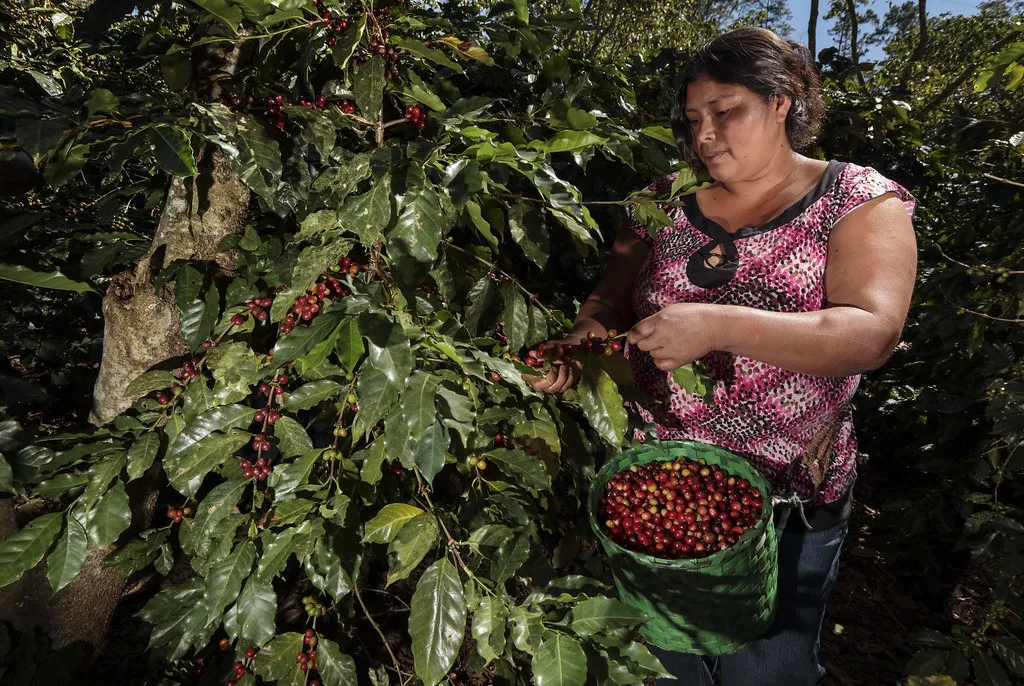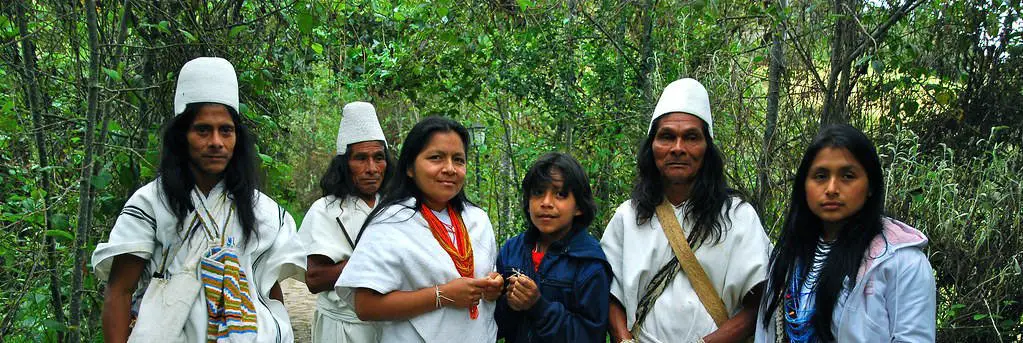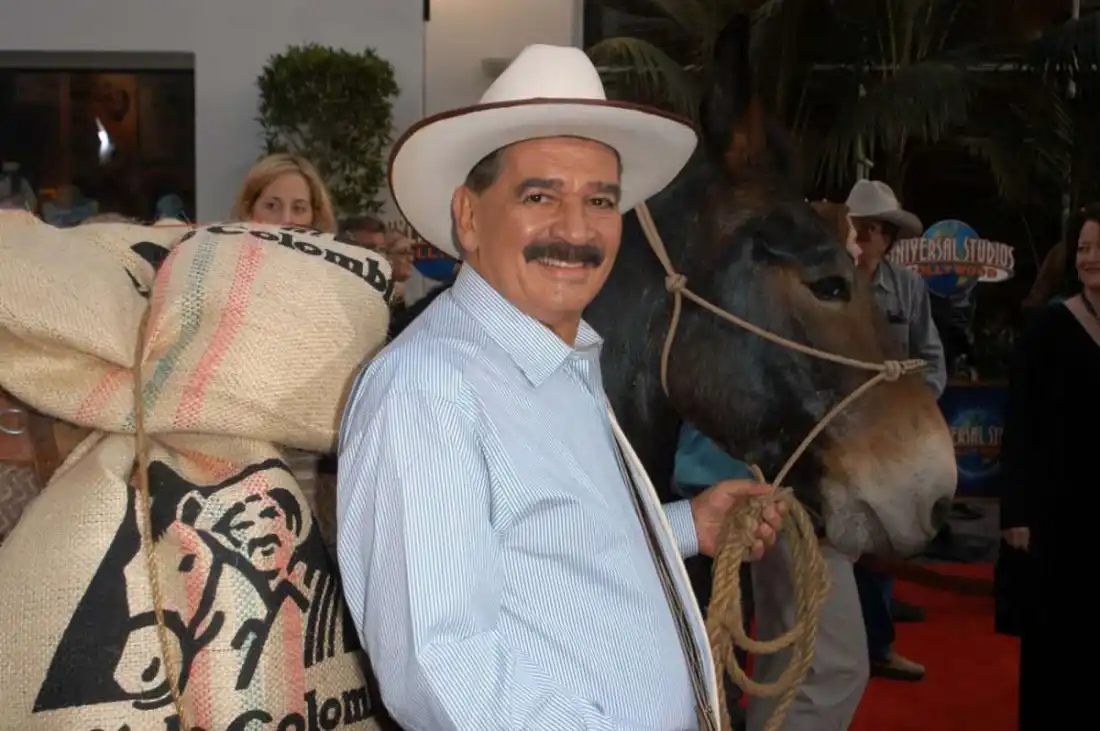Is Kopi Luwak the most expensive coffee?
You certainly have heard about civet coffee or may know it rather by its more colloquial expression cat poop coffee. To add a more sophisticated touch and to establish it as an upscale product, it is now mostly marketed under its Indonesian name, Kopi Luwak.
You may also have heard that it is one of the more pricier coffees in the world. Not the most expensive coffee in the world, but it’s still quite pricey. The new record holder is a Panama Geisha Coffee, with an outstanding flavor profile.
Harrods in London sells genuine wild Kopi Luwak for a whopping $1,300.00 per pound retail. But elsewhere you can get it much cheaper. The Kopi Luwak price for a single cup of this brew in a cafe might run anywhere from $50 to $100. Sure, you can also find much cheaper versions of this coffee on the market, but there usually is a reason for the lower prices. Further down in this article, I will explain.
But the high price is also used as a marketing gag. GC has included Kopi Luwak as a topic in their series “Most Expensive Shit”. Here is their video featuring rapper 2 Chainz trying out this coffee. I have no idea about his gourmet expertise, and I will hold back my comments. But feel free to comment as you wish at the bottom of this post.
What exactly is Civet Coffee or Kopi Luwak?
Once you recover from sticker shock, you may wonder what makes this coffee so special that some folks are ready to pay such exorbitant prices. After all, this coffee is from the same kind of tree as other coffee grown in Indonesia. But it is harvested in a very different way by enlisting the help of a little nocturnal animal, the palm civet. This creature has the size of a cat and a long tail like a monkey and is native to Southeast Asia. Zoologically, it is not a cat as one would expect from the folksy expression “cat poop coffee”. One of the favorite treats for the palm civet is ripe and juicy coffee cherries.
The smart animal naturally chooses the ripest and juiciest berries. It indulges on the fruit, but it doesn’t crack the coffee beans and swallows them whole. Since it can’t digest the coffee beans, they leave the animal in the natural way after having passed its intestines. On their way through the animal, the coffee beans are exposed to various digestive enzymes and undergo some fermentation process.
The excrement is then collected, washed, and further processed like regular coffee beans. This internal fermentation process and the fact that the discriminating animal chooses only the ripest and tastiest coffee cherries supposedly lend this coffee its special characteristics and taste.
Historically, the first to discover this specialty were the slave workers in the coffee plantations in Indonesia. This was in the 1800s when Indonesia was under Dutch colonial rule, and the Dutch owned the coffee plantations. The plantation owners did not allow their workers to pick coffee cherries for their own use. However, the poor slaves discovered that the undigested coffee beans found in the civet droppings made drinkable coffee. Here is a bowl of freshly collected civet droppings:
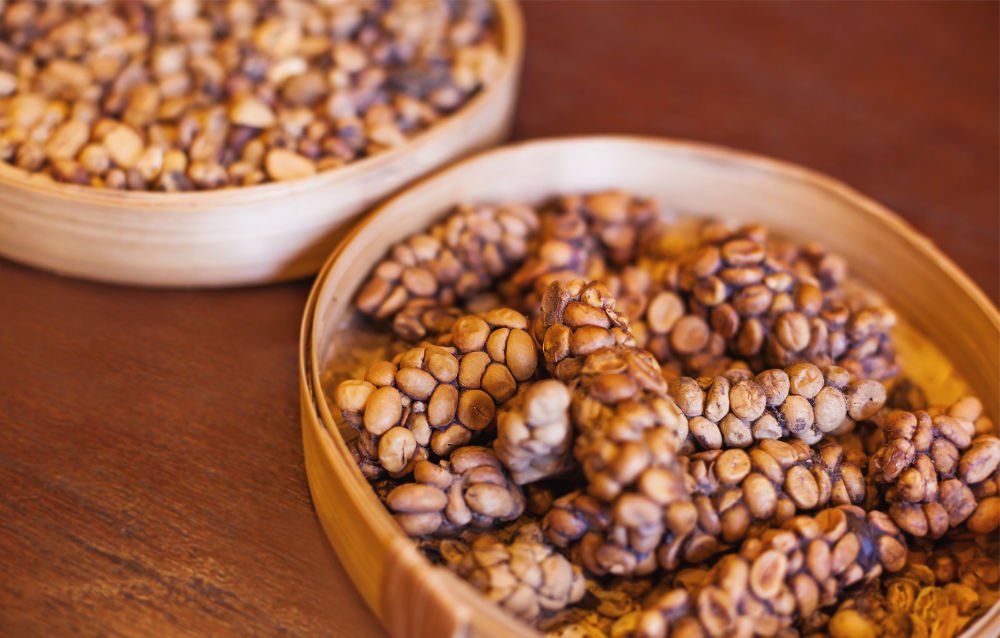
What about the taste, is it really that good?
You can argue about taste forever. After all, it will always be a very personal thing. Most seem to agree that civet coffee is well-rounded and significantly lower in acidity than regular coffee. This is good news for those with a sensitive stomach. But with a smart selection of appropriate coffee beans and the brewing method, e.g. cold brewing, you can achieve the same effect. When it comes to evaluating the taste beyond acidity, opinions vary quite a bit. Coffee professionals and coffee-loving regular folks can’t find a consensus on this. Opinions range from the very negative to the very positive.
Here is just one example of a tasting on video showing a variety of opinions, and as you can see, there is not even consensus about acidity. At the World Specialty Coffee Conference and Exhibition, which took place in September 2018 in Tokyo, I had a chance to taste Kopi Luwak, both from wild and caged animals. Frankly, I was not impressed.
Yes, I was mild but almost to the point of being bland, missing a lot of the characteristics of a good coffee. Well, coffee is all about extraction, and some of it had already taken place inside these cute animals. There may also be variations in taste depending on which individual palm civet the beans have passed through. Like in humans, the composition of the intestinal bacteria colonies can vary significantly and affect the taste in different ways. But I have my doubt whether anyone can really tell the difference.
This is a not-so-happy-looking caged civet.

The dark side of Kopi Luwak
Because of the tedious and labor-intensive way of gathering and processing the civet poop, it is quite understandable that supply is limited. Also, it is only available during the harvest season. Limited production and ramped-up demand lead to higher prices. That’s economics in full play. Some sources claim that the annual production of wild kopi luwak is only around 500 kg, which may be true or not. It probably is a lot more, but it is very difficult to obtain reliable numbers.
It does not come as a surprise that a whole new industry developed in Indonesia and the Philippines to take advantage of the juicy Kopi Luwak price level. Many plantation owners now hold civets in cages and force-feed them with coffee cherries to mass produce the prized coffee.
The truth comes out
Tony Wild of Taylors of Harrogate, the famous British Tea and Coffee company, was the first to import Civet coffee to the West in 1991 as an exotic novelty. Years later, when he saw the mistreatment of civets in Indonesia and a few other countries, he regretted his involvement. He wrote a detailed article about these unfortunate practices and published it in 2013 in The Guardian. The BBC also did undercover research in the same year and reported on the inhuman treatment of the animals and the fraudulent mislabeling of the coffee.
The National Geographic Magazine also did a piece on that horrible situation and confirmed the abusive living conditions of caged palm civets in almost all plantations. Kopi Luwak from caged animals is still commonly sold as wild civet coffee. Some producers claim to offer their coffee as being from wild civets and display some certification to that end. However, the system of certification is not foolproof at all. Producers pay a fee and go through a one-time inspection. They receive their certifications, and nobody cares what happens after that. There usually is no regular follow-up control.
Synthetic Kopi Luwak
In recent years, many attempts have been made to recreate in the lab what usually happens inside the palm civet. A research team of the National Pingtung University of Technology and Science, Taiwan, claims to have succeeded in creating this process under lab conditions. Other biotech companies are taking inspiration from the natural process and experiment with various fermentation techniques. This is not necessarily to replicate the exact process of the digestive tract. The resulting coffee may or may not be similar to the real thing, but at least no animals are harmed. And prices should be much lower.
Does the craziness stop here?
The hype about Kopi Luwak went beyond any reasonable limit. Even Jack Nicholson appeared in a hilarious promotion video published in 2010. Sure, Kopi Luwak has a novelty factor working for it and a hint of disgust at the production process. But is it really worth the money? That’s entirely your own decision. If you have money to burn, go ahead. But keep in mind that there are animals suffering for your pleasure.
The craziness does not stop here; more creative minds are jumping on the poop bandwagon. Coffee extracted from the poop of monkeys and elephants is already available. What would you think of a human version…? If you enjoyed this article, share it with your friends on your favorite social network, and feel free to leave your comments below. We would love to hear your opinion.
Are you curious and want to check it out yourself?
Here is a selection of several brands of Kopi Luwak.
I would recommend strictly sticking to Kopi Luwak from wild civets. They know their way around in the forests and will pick only the tastiest coffee cherries. Let’s appreciate the good work of wild animals and not support the cruelty of putting them in cages to be force-fed inferior beans.
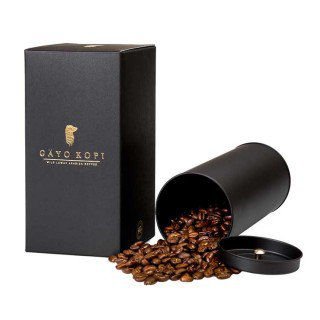
This is my favorite Kopi Luwak, collected by wild civet cats.
If you are in the US, you can order it here.
Unfortunately, this merchant does not ship internationally, If you live elsewhere, you should consider buying from Volcanica Coffee or amazon.com.
It is collected by wild civets in Indonesia and is 100% certified authentic and cage-free.
This is an amazingly full-bodied and flavorful coffee, absolutely justifying its price.
You can buy it from Volcanica Coffee Company: Kopi Luwak, 16 oz., the rarest coffee in the world, with a certificate of authenticity available at Volcanica Coffee.



